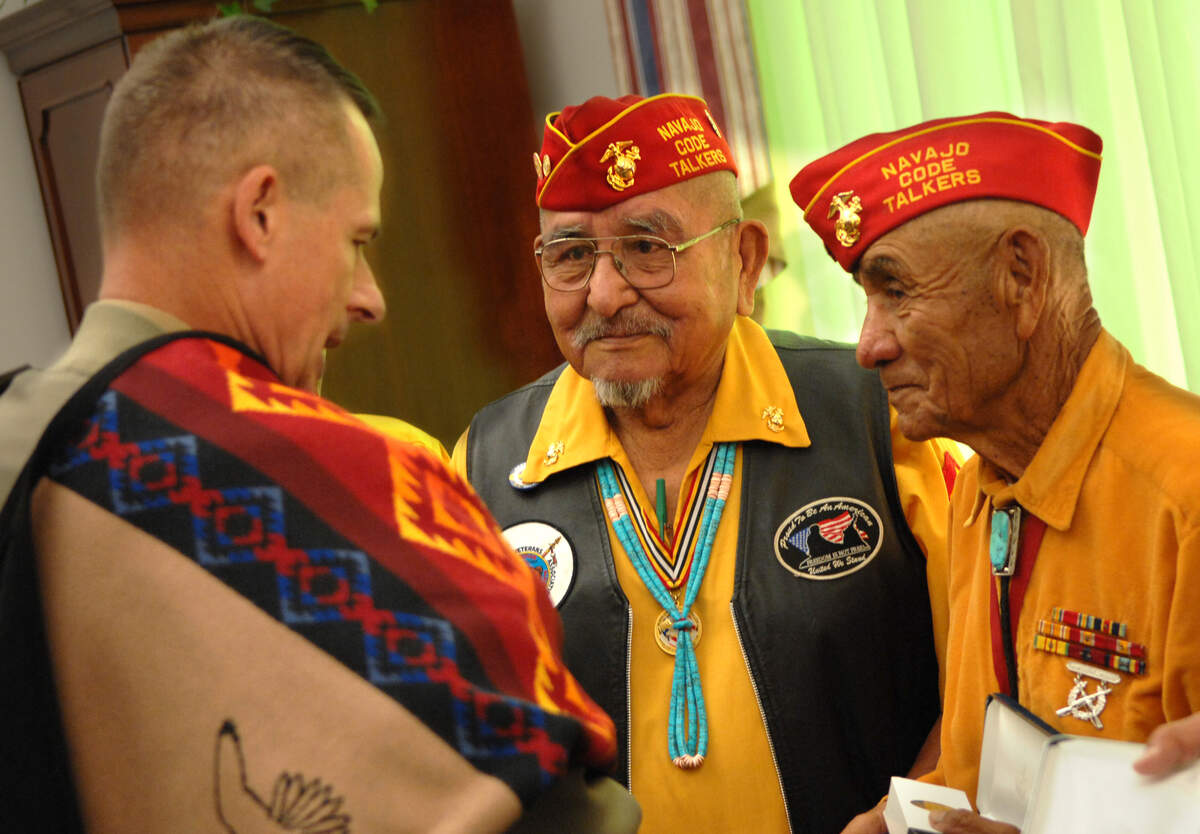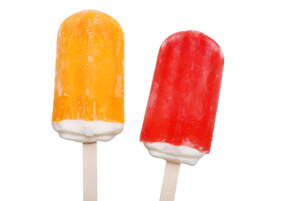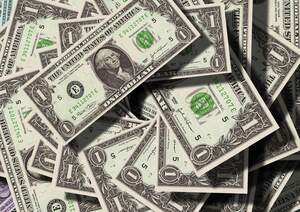

National Navajo Code Talkers Day
Also known as
National Navaho Code Talkers Day
Observed
annually on August 14th (since 1982)
Dates
Founded by
President Ronald Reagan on July 28th, 1982
Tags
History & Culture
Military & Patriotic
Hashtags
#NationalNavajoCodeTalkersDay
#NavajoCodeTalkersDay
#NationalNavahoCodeTalkersDay
#NavahoCodeTalkersDay
Sources
http://hmhinthenews.com/national-navajo-code-talkers-day-2/
http://www.navajo-nsn.gov/News%20Releases/NNCouncil/2018/aug/FOR%20IMMEDIATE%20RELEASE%20-%20Navajo%20Nation%20Council%20celebrates%20Navajo%20Code%20Talker%20Day.pdf?u=0bf367cc7bf787cb9b02b21c8&id=580f9420b9
https://web.archive.org/web/20170905000452/https://www.presidency.ucsb.edu/ws?pid=42794
https://www.amazon.com/dp/1598888587?tag=checkiday08-20
https://www.azcentral.com/story/news/local/arizona/2018/07/11/navajo-code-talker-facts-unbreakable-code/460262002/
https://www.govinfo.gov/content/pkg/STATUTE-96/pdf/STATUTE-96-Pg244.pdf
https://www.historynet.com/world-war-ii-navajo-code-talkers.htm
As World War II raged, the need arose for the improvement of coded messages on the Pacific Front. These messages conveyed secret information from battle lines to air bases and other locations. Cipher machines, which did the coding, didn't work well in the jungles of the Pacific Islands. Additionally, the Japanese were adept at code-breaking, because many knew English well—many even had been educated in the United States. Ultimately, the Navajo Code Talkers were the answer, and we celebrate and remember them today, on National Navajo Code Talkers Day.
Philip Johnston, a World War I veteran, hoped to contribute to World War II as well. He had been raised by missionaries on a Navajo reservation and had grown up speaking the tribe's language. He came up with the idea of basing a code off of the language, as he knew other tribes didn't know the language, and that the general public didn't know it either. In February 1942, Johnston visited Camp Elliott near San Diego, along with four bilingual Navajos, who demonstrated the language to Marine staff officers. The officers were impressed, and Major General Clayton Vogel requested Marine Corps Headquarters in Washington, D.C. to authorize the recruiting of 200 Navajos to be Marine communication specialists. Headquarters approved the authorization of 30, and 29 ultimately became part of the original Code Talkers. These men had all of the qualifications that were required to be a Marine but also were fluent in English and Navajo.
On May 5, 1942, the recruits arrived in San Diego for seven weeks of basic training at the Marine Corps Recruit Depot. They then went to the Fleet Marine Force Training Center at nearby Camp Elliot and did intensive training with transmitting and radio operation. They also developed the code that would be used in battle. At the time, the Navajo language had no alphabet and no written form. The recruits—who became the 382 Platoon, U.S. Marine Corps, and were referred to as "The Navajo School" while at boot camp—came up with a two-part code. The first part was a 26-letter alphabet that corresponded with Navajo words. The second part of the code was a vocabulary with 211 English words that had Navajo synonyms. Over the course of the war, this expanded to 411 words.
In August 1942, most of the Code Talkers went to Guadalcanal, the first place where the code was used in battle. More Code Talkers were requested, and by August 1943 there were almost 200. In all, 421 Code Talkers were trained during the war. The Navajo Code Talkers served in all six Marine divisions in the Pacific, as well as with the Marine Raiders, and with the Marine parachute units. They were integral in many battles in the Pacific, and besides Guadalcanal, participated in assaults at locations such as the Solomon Islands, the Mariana Islands, and Iwo Jima. The Japanese were unable to decipher the telephone and radio messages that the Code Talkers conveyed.
The role of the Navajo Code Talkers was largely unknown for many years, and the program was classified until 1968. In 1982, Congress passed House Joint Resolution 444, which requested President Ronald Reagan to designate National Navajo Code Talkers Day on August 14. On July 28, Ronald Reagan issued Proclamation 4954, which said that the day was "dedicated to all members of the Navaho Nation and to all Native Americans who gave of their special talents and their lives so that others might live. I ask the American people to join me in this tribute, and I call upon Federal, State and local officials to commemorate this day with appropriate activities."
In 2000, the Honoring the Navajo Code Talkers Act was signed into law. It authorized the president to present the Congressional Gold Medal to the original Code Talkers. This presentation was done the following year, and the Code Talkers that weren't a part of the original group were given the Congressional Silver Medal. In addition to today being National Navajo Code Talkers Day, it is also Navajo Code Talkers Day. This day was designated by the Navajo Nation Council in 2007.
How to Observe National Navajo Code Talkers Day
There are numerous ways that you could celebrate the day. If you are up for some traveling, you could stop at the Navajo Code Talkers Museum in Tuba City, Arizona; the Navajo Code Talkers Museum in Gallup, New Mexico; or the Navajo Code Talkers Exhibit in Kayenta, Arizona. If you wish to stay at home today, there are many books or films related to the subject of the Navajo Code Talkers that you could explore. You could read Code Talker: The First and Only Memoir By One of the Original Navajo Code Talkers of World War II or The Navajo Code Talkers. You could watch the documentary Navajo Wind Talkers of World War II or the feature film Windtalkers. In addition, there are many interviews with Navajo Code Talkers that you could watch online.





















